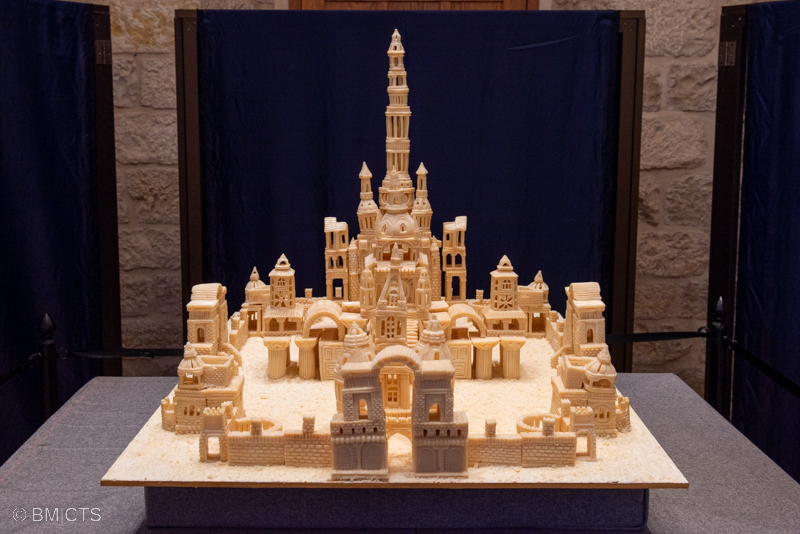In the hands of fra Balu gouges (scalpels to carve and shape) quickly scoop out the cakes of Marseille soap. Human shapes, animals and small architectures emerge from the cubes. “When I arrived in the Holy Land three years ago, for my theological studies,” he says, “I started to work olive wood, which is available here in large amounts. But it was too hard and my tools were not suitable. One day, in the convent’s laundry, I saw the blocks of soap for the washing, that nobody uses any more. I asked for a couple and I began to experiment.”
Fra Balu, 29 years old, belongs to the Province of St Thomas Apostle of the Friars Minor (India). Ever since he was a child, he has developed an interest in art but, he says, “I truly discovered this gift when I entered the Order, almost ten years ago.” Since then, art is like “a second vocation. It is my way of expressing myself, of understanding what my place in the world is and trying to give something to others.” Fra Balu often works at night, because during the day he is busy studying. “There is me, the matter and God. I call what happens between us art. It is like a prayer: there is the whole of the mind, the heart, the hands and the Lord.” Last summer, fra Balu took an intensive course at the School of Sacred Art in Florence: “The Custos saw in me a gift to be developed and have me this opportunity.”

From 2 October and for the whole month, the soap sculptures by fra Balu (together with other works) will be on display in the Curia of St Saviour’s Convent, the seat of the Custody of the Holy Land, in the exhibition “Beyond the human perception”. The title aims to recall the creative act of God, who thinks and calls every single thing into existence: “There is a further level that we have to seize in what we perceive with our senses: the Creator’s gaze.” The central work of the exhibition – which includes paintings and sculptures made from various materials – is a sculpture that aims to evoke the New Jerusalem. A real city, constructed one piece at a time with soap and assembled on a panel measuring 100 x 80 centimetres. The work was created without designs: “That night I started to work. I started to do something and at the end something else emerged. As I went on, I realized there were some connections with the Scriptures, in particular the book of the Apocalypse.”

The work - which from above is in the shape of a cross – has walls with four gates (symbolizing the Evangelists) and three main structures in the centre: a tower (Mary, “David’s tower”), which holds the Ark of the Alliance. In front there are two domes which represent the Old and the New Testament or the Old and the New alliance. At the centre of the model, a cubic structure represents Jesus. This element of architecture is 40 centimetres high. “The number 40 in Judaism is associated with the meanings of water, people, language, nation; it represents the sea of the Torah, the ocean of the Talmud, “wisdom.” It rests on 12 pillars (the apostles) and can be accessed only through the tower (Mary) and a “narrow street” (that of John the Baptist). This architectural element leads to another tower, with a triangular base. This is the symbol of the Trinity. There are several other Biblical references. Some, more concealed, can be discovered from very close thanks to magnifying glasses. “I believe,” fra Balu concludes, “that we are already living in the New Jerusalem, founded by Jesus himself, the Catholic Church.”
Marinella Bandini
